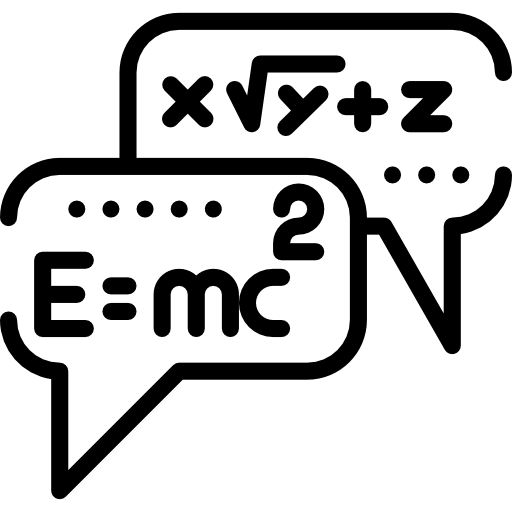
9 min
1
10.04.2022

Dealing with exponential expressions is an inevitable phase of your algebra courses, as they're used in equations and other applications.
 What's an Exponent?
What's an Exponent?
An exponent is the number of times a base number will be multiplied by itself. It can be any number and can be classified as a negative exponent, zero exponent, or positive exponent.
Exponents starting from 1 are called positive exponents and are the most common ones – you've probably dealt with them often.
 What Are Zero and Negative Exponents?
What Are Zero and Negative Exponents?
Zero and negative exponents are special cases of exponents.
For example:
23 is the same as 2 x 2 x 2, a repeated multiplication leading to a final answer of 8: 2 x 2 x 2 = (2 x 2) x 2 = 4 x 2 = 8.
However, with zero and negative exponents, things don't easily work that way.
Zero Exponents
It's an exponent that always and automatically equates any base number to 1. Simply put, whatever the base number is, as long it's raised to zero power, it will always equal 1. Everything is irrelevant, no matter how large the value of the number is or whether it's a positive number or a negative base.
For example:
Whether it's 30 or 300,000,0000, the answer is still 1.
Negative Exponents
With numbers raised to negative powers, on the other hand, you move the base number's position with the exponent to remove the negative sign and make it positive. In other words, you reciprocate the given and make the exponent positive. The result will always be a fraction.
For example:
2-4 = (1/2) x (1/2) x (1/2) x (1/2) = 1/16
or 2-4 = 1/(24) = 1/(2 x 2 x 2 x 2) = 1/16
If the negative powers are at the top of a fraction or are a whole number, moving the base number with the exponents to the bottom of the fraction will make the exponent positive. In other words, when any number over 1 is raised to a negative exponent, it can be positive - as long as you put it in the denominator with 1 as the numerator.
Another example:
10-1 = 1/101
 Zero and Negative Exponents Explained with Examples
Zero and Negative Exponents Explained with Examples
The descriptions and overviews of zero and negative exponents were discussed in the previous section. Now, we will look at and discuss how to solve them.
Solving with Zero Exponents
When dealing with zero exponents, the easiest way to explain it is by using the quotient of powers rule. Recalling your first five exponent rules:
(x/y)5 = (x5)/(y5) or (x2/y3)3 = x6/y9
- Product of Powers Rule or Product Rule - multiplying two base numbers of the same value can be simplified to the same base number. Then, add the base numbers' exponents: 72 x 75 = 72+5 = 77
- Quotient of Powers Rule or Quotient rule - dividing two bases with the same value can be simplified to the same base. Then, subtract its exponents: (134)/(131) = 134-1 = 133
- Power of a Power Rule - when power is raised to another power, the exponents are multiplied, and the common base is kept: (x2)3= x2x3 = x6
- Power of a Product Rule – when a base inside parentheses, xy, is being raised to an exponent, the exponent is distributed to each part of the base: (xy)4 = (x4) x (y4)
- Power of a Quotient Rule- this works the same way as the power of a product rule; the exponent is distributed to both the dividend and divisor:
Zero Exponent Rule
Now, to fully explain how a number raised to the zeroth power is always equal to 1, we can use the quotient of powers rule. According to the quotient rule, dividing the same bases will result in the same base and an exponent of the top and bottom exponents' difference.
For example: Explaining 70 = 1:
70 can come from 72 divided by 72.
72/72 = ?
Following the quotient rule, subtract the exponents from each other. In this case, the exponents will be canceled out, as they're of the same value: 2.
72 / 72 = 7(2-2) = 1 or
7(2-2) = 70 = 1
Also, it doesn't matter how lengthy the equation is. Any equation raised to zero, as long it's inside the parentheses, will always be equal to 1.
For example:
(5x4y5)0 = (50 x0 y0) = 1
Solving with Negative Exponents
Negative exponents look complicated to deal with at first glance, but they aren't actually. Remember that the result will always be a fraction, and the process will always be the reciprocation of the given. Recalling how to make a number into a reciprocal:
- Make the number a fraction or put it over one.
- Flip the number in the numerator into the denominator and vice versa.
- When a negative number’s position is changed in a fraction, it will become positive, even if it's an exponent.
Negative Exponent Rule
Remember that: (x-2)/(y-3) = y3/x2
How?
(x-2)/(y-3) = (1/(x2))/(1/(y3))
= (1/(x2)) x ((y3)/1)
= y3/x2
Thus, negative exponents in the denominator move to the numerator, and negative exponents in the numerator move to the denominator.
Let’s apply this to an example with a negative exponent:
Case 1, when the given is not initially a fraction.
x-3 = ?
x-3 => x-3/1
x-3/1 => 1/x^3
Case 2, when the given is a fraction with a negative exponent at the denominator.
1 / x-4 = ? -> reciprocating,
1/ x-4 => x4
 What Is the Use of Zero and Negative Exponents?
What Is the Use of Zero and Negative Exponents?
Exponents, in general, have many uses and applications in real life. The two uses of zero and negative exponents are:
Measurements and Calculations
The two exponents are used to represent lengths. A negative exponent, most specifically, is used to express attribution of something and show how small something is.
For example, negative exponents are used in representing the different measurements of small creatures, such as bats. Zoologists use negative exponents to measure their body parts.
A measurement can be shown as 1.08x 10-4 cm: this is done when there are too many decimal places due to the measurement's small size; therefore, the figure is shortened using negative exponents for convenience.
Also, in the same way, these exponents can be used for weights. Lighter weights are usually expressed with negative exponents for ease and for easy calculations.
Another example is the "Exponential Decay" used in graphs and representations. Negative exponents result in smaller values and therefore show a "decay" in the graph as the data drops or decreases as expressed.
Simplification
The zero and negative exponents are generally used to simplify numbers and values for better usage and easier input to real-life applications. Like the examples above, they're used to simplify values of various measurements for convenience.
Calculations in various professions, especially in different fields of science, use negative exponents, as most measurements tend to be too small to use as they are, with too many decimals.
Negative exponents are used to simplify measurements and straightforwardly show how small they are. Large negative exponents mean smaller measurements.
Zero exponents work the same way as they're used in many mathematical equations to represent that no matter how big a number is, as long it's raised to the zeroth power, it's equal to the value of 1.
 Formulas
Formulas
Compiling the general formulas used for both zero and negative exponents, let a be any number:
Zero Exponent Rule
a0 = 1
(ax)0 = a0x0 = 1
Negative Exponent Rule
Case 1:
a^-2 = 1/a2
(ax)-2 = 1/(ax)2 or 1/a2x2
Case 2:
1/(a-3) = a3/1 or simply a3
1/((ax)-4) = (ax)4/1 or a4x4
 Summary
Summary
To summarize everything, any number raised to the power of zero will always be equal to 1. In contrast, any number raised to a negative power will be reciprocated to make it positive before proceeding to solve the final value.
It's also important to remember the concepts about the other exponent rules and about reciprocals to handle equations with zero and negative exponents properly.
These exponents are mainly used for equations, calculations, and measurements for different areas of expertise and profession, such as mathematical equations, scientific notations and calculations, and very small measurements or values.
You can try solving a complex and complicated worksheet about these exponents using Mathway or other solver programs.
Feel that you need help to deal with Zero and Negative Exponents? You can rely on Studybay experts. We provide online tutoring and writing services for students.
Studybay helps students with:
- math homework
- calculus homework
- assignments in different subjects



